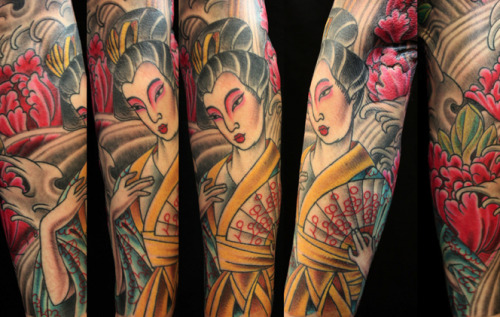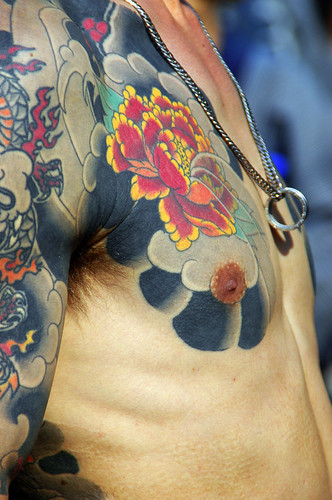


Due to the popularity of body art many art lovers have tried to ink the Japanese tattoo symbols in their body. During the early years, when you are in Japan, you would have tattoos of the people you would think that are associated to Yakuza, which is known to be a group of notorious Japanese criminals. But over the years, Japan has developed and the significance of body art is greatly appreciated. Presently, both the tattoo lovers and tattoo artists find the Japanese symbols attractive.
Examples of Favorite Japanese Symbols
1. Koi Fish - This is one of the most sought Japanese symbols used even for non-Japanese. If you visit Japan you will notice that most of the temples have Koi fish symbol. This is because the fish signifies strong determination that is very significant to the people of Japan. Likewise, the Koi fish is also a symbol of uncompromising bravery.
Moreover, Koi fish is one of the many symbols that are used by men on their arms, back, calf areas and shoulders. Some inked this symbol in full sleeve designs while others choose the large koi tattoos. On the hand, women prefer to ink the tattoo on their arms, stomach areas and hips. The good thing about this symbol is that the color harmonizes with any skin tone.
2. Cherry Blossoms - This flower symbolizes life and is comparable to beauty. The essential characteristic of cherry blossoms that makes it an important symbol is its ability to thrive in any weather condition though it is also delicate. In this sense, it implies that living life to the fullest is very important for us to see the beauty of life. On the other hand, living life to the fullest does not mean that we take for granted the possibility of death. That is why it is necessary that we live life on its very meaning.
3. Hannya Masks - This mask has a demonic look that was originated in Japan's Kabuki stage play. It symbolizes jealous and hatred but Japanese believed that inking this symbol in their body would beget good fortune and keep away evil spirits.
Before you decide to pick any Japanese tattoo symbols make sure to know first its meaning as well as what it stands for. In this way you will be confident to flaunt your body art without worrying if anyone asks you what its significance is. Moreover, you should also keep in mind that this body art would reflect your personality and it serves as self representation. Likewise, tattoo does not only add attraction but also used for sentimental reasons.


 As we know one of the places where tattooing is heavily practiced as a beautiful art form and with the greatest skills level is Japan. The history of tattooing there dates back to the fifth century where historians found clay figurines (haniwa) in a grave that show distinct facial marks. These marks are believed to be early forms of tattoos that represent decorative and religious functions.
As we know one of the places where tattooing is heavily practiced as a beautiful art form and with the greatest skills level is Japan. The history of tattooing there dates back to the fifth century where historians found clay figurines (haniwa) in a grave that show distinct facial marks. These marks are believed to be early forms of tattoos that represent decorative and religious functions.












































